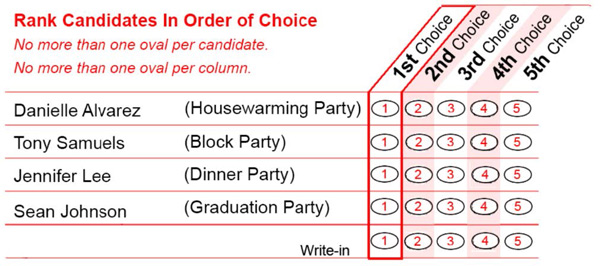City Politics
Local Elections: 2021

Taharka Robinson on What’s Happening in NYC’s Municipal Elections
Civics Corner
by David Mark Greaves
With election interest at a fever pitch and while voting is all the vogue, this would be a good time to look ahead to the 2021 local election cycle and transfer some of that energy into planning there.
To get the low down on what’s happening, we knew we had to speak with the Rev. Taharka Robinson, activist, political guru, historian and knower-of-things, about what next year’s election calendar looked like.
We caught up to him after he had spent the day, of many, taking seniors to vote.
“What’s happening? Everything is happening.” “I’ll start from the top, Next year is the NYC Municipal elections” and Taharka said that means every office is open to candidates: “the Mayor, Comptroller, Public Advocate, the five Borough Presidents and all 51 council seats and over 30 of them won’t have an incumbent.”
And what about judgeships? “There are multiple judgeships open. One district will be the Second Municipal District of Kings County. It is a countywide seat that is going to be open because Carolyn Wade, a Bedford Stuyvesant judge, has been promoted to the Supreme Court.
“The Second Municipal District, which is in our neighborhood, encompasses Bedford Stuyvesant, Crown Heights and Clinton Hill all the way down to Vanderbilt Avenue and DeKalb.
“And then there’s another race, the Kings County Surrogate’s Court.” Margarita Lopez Torres is aging out. Taharka said that even though she was reelected to a fourteen-year term 2019, “at 70, she has to retire.”
Se we know there’s a lot going on and the next question is when does all of this start? “The petitioning will start in February and that‘s right around the corner and the Primary is in June.”
Between the start of the Petitioning and the Primary is the process itself, the collection of signatures, varying with the office. Again, starting from the top as best he could remember, “Don’t quote me on this now,” as from memory, he ran down the list of signatures needed for each office, ending with surety on the city Council needing five hundred to get on the ballot.
In the Democratic stronghold that is central Brooklyn the primaries are everything. If you’re not in the Democratic party, you have a much longer row to hoe. In that regard, what about the general elections in November and the other parties?
“You’ve got multiple parties in the general election,” Taharka said. “You’ve got the Working Families Party, Independence Party, Republican Party, the Conservative party and the Right-to-Life Party.”
All of them may not be on the ballot because every year they need a minimum number of votes to maintain their party line on the ballot. “At this point in time, the Working Families Party is struggling to remain on the ballot. If they don’t get enough votes in the general election, they’re gone.”
That puts the power to affect party positions, directly in the hands of the voters. On the ballot, a candidate can appear on multiple party lines. If you want to move your candidate of choice toward a different part of the political spectrum, vote for your candidate on that party’s line. Counting votes is a politician’s business. Purely as an example, If the Democratic candidate see a substantial number of votes for her or him coming on the Working Family Party’s, Conservative or the Republican Party’s line, they will adjust their positioning on issues to attract more of those votes to keep those lines and forestall challengers for that position.
Taharka raised the issue of Ranked Choice Voting (RCV), being used for the first time in the upcoming Primaries. RCV as it’s known, involves the voter selecting up to five candidates in order of preference.
There are then several rounds of elimination ending with the candidate accumulating the most votes throughout the elimination of the places from the bottom to the top.
We will cover Ranked Choice Voting in later columns, for now, as a primer, below are excerpts concerning RCV from the Final Report of the 2019 New York City Charter Revision Commission.


